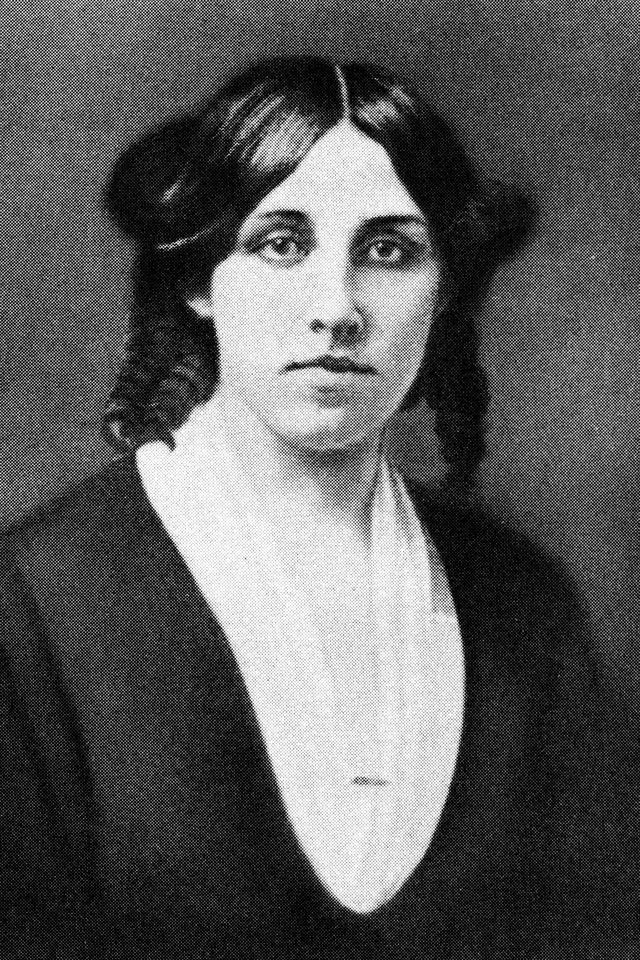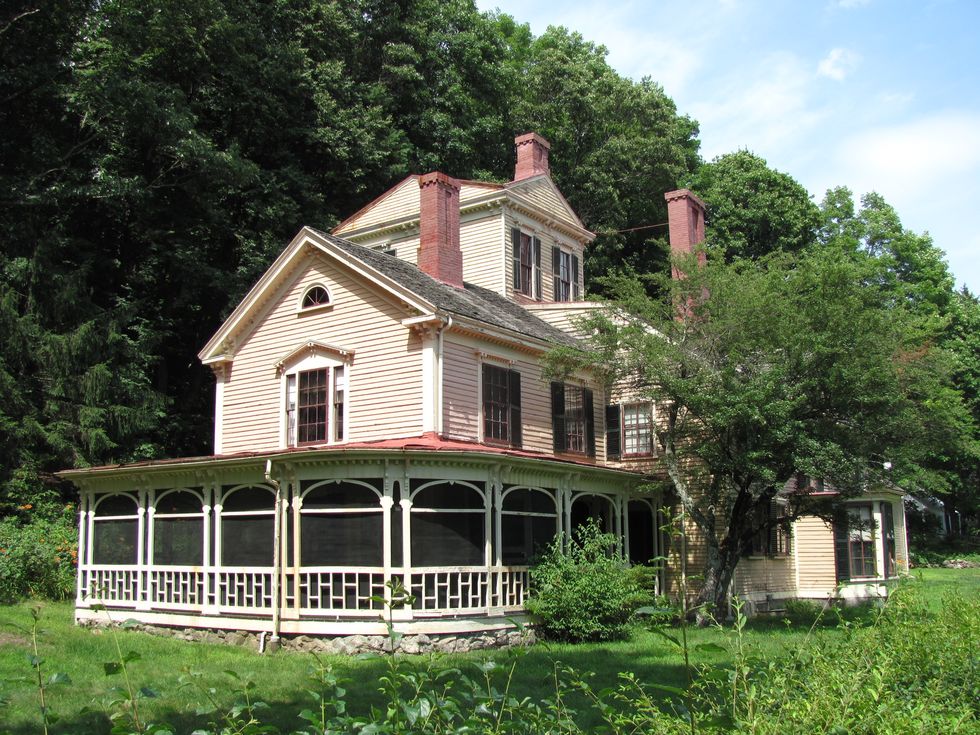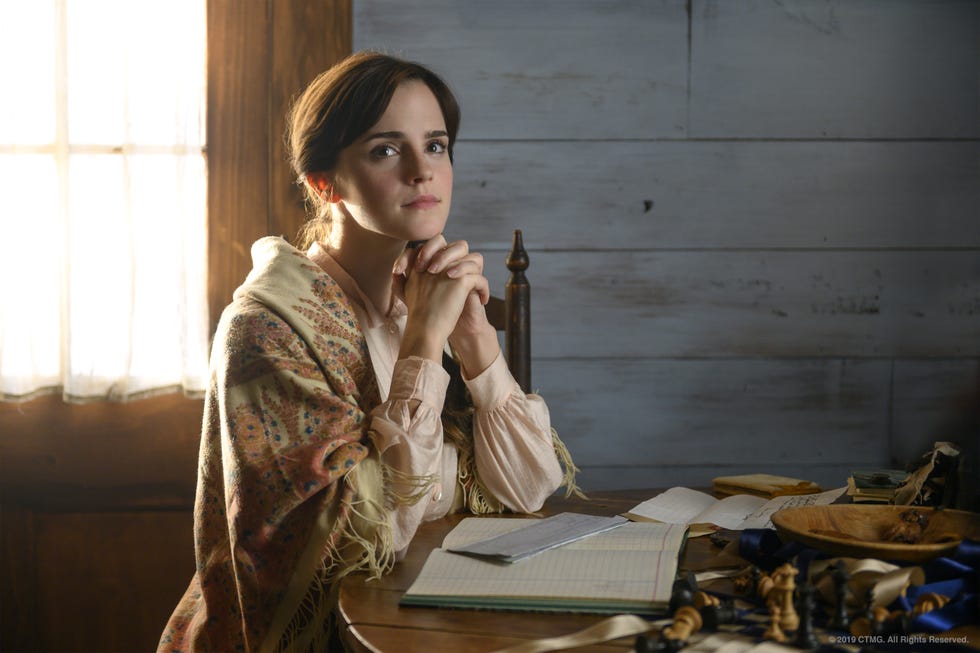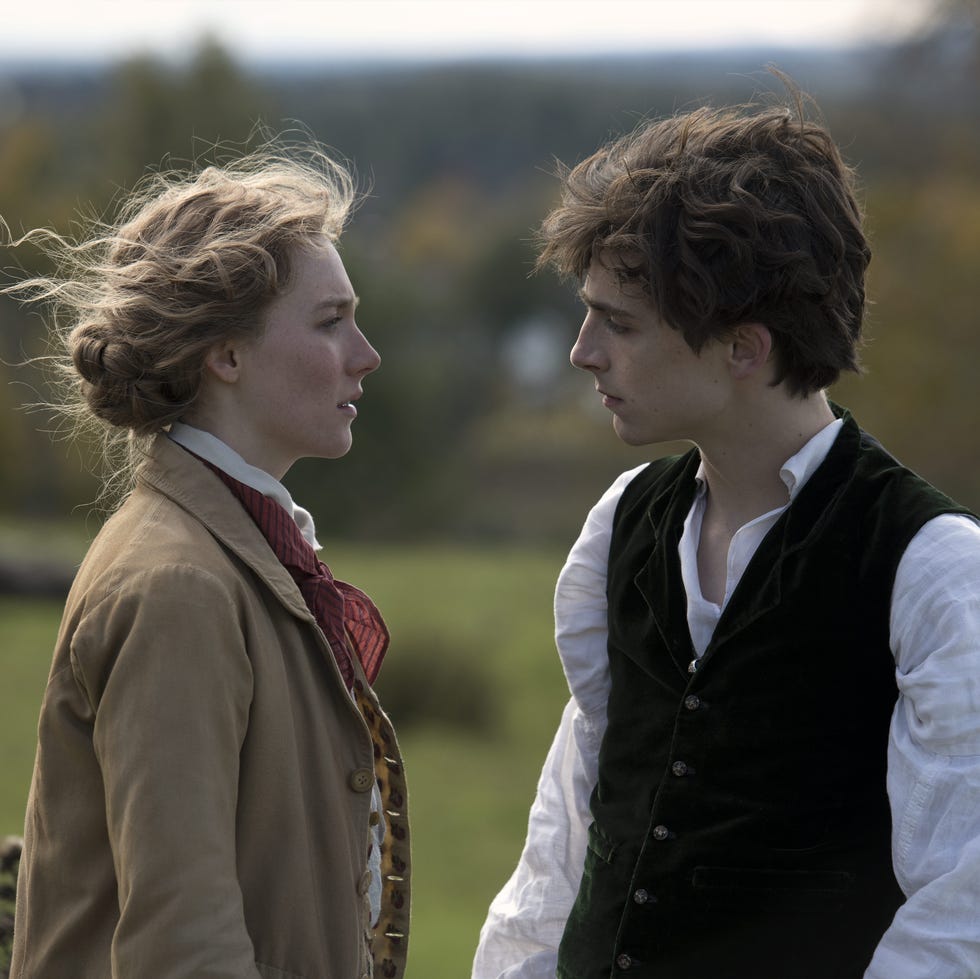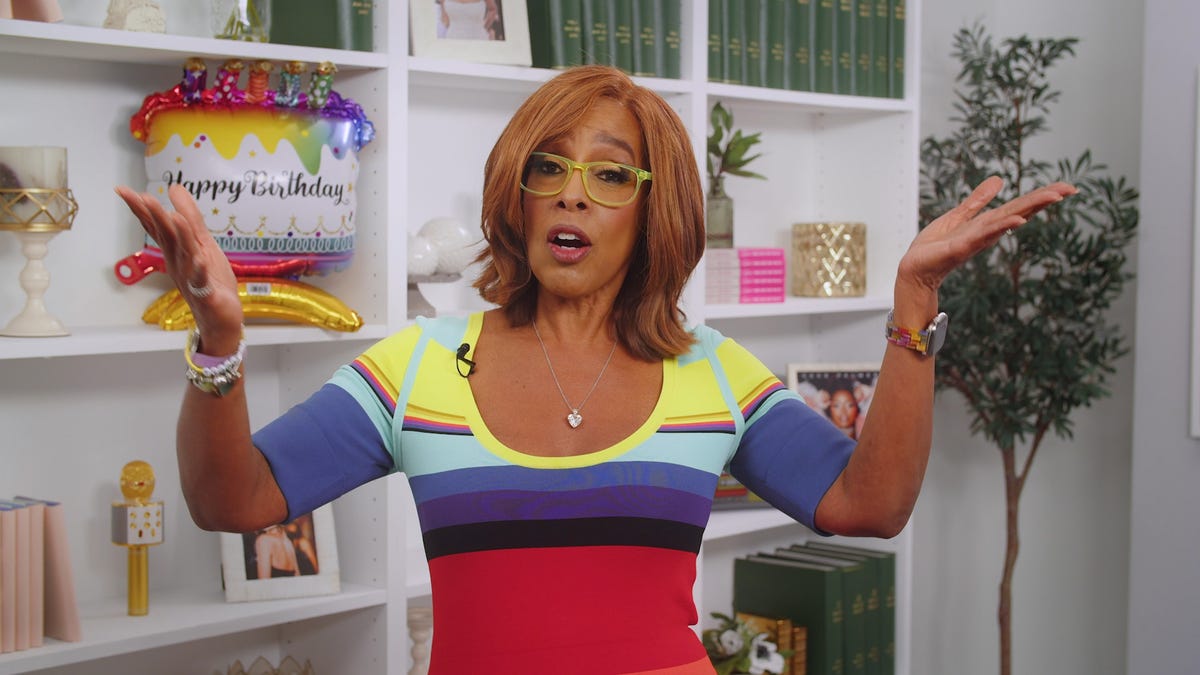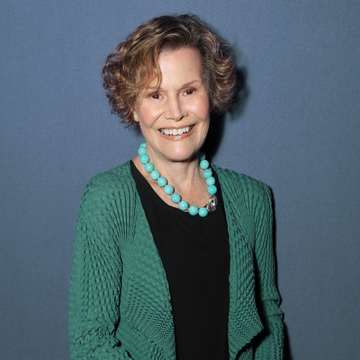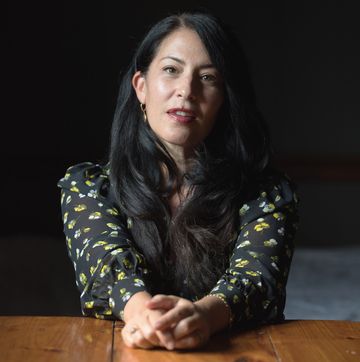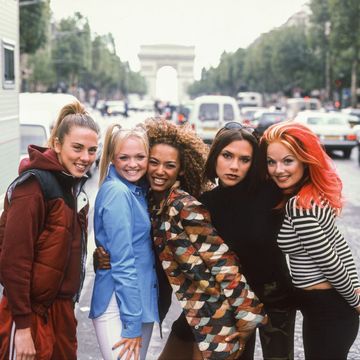- Louisa May Alcott is most famous for her novel Little Women, which has remained in print since its 1868 publication.
- Little Women is based on Alcott's childhood experiences—but there's a lot she left out. Some interesting facts about her? Alcott was once a servant, wrote fiction under a pseudonym, and didn't want to write Little Women to begin with.
- Now, you can watch Greta Gerwig's movie adaptation of Little Women on Christmas.
"I will do something, by and by. Don’t care what, teach, sew, act, write, anything to help the family; and I’ll be rich and famous and happy before I die, see if I won’t," Louisa May Alcott vowed as a child.
Born in 1832 to a principled and intellectual New England family, Alcott never let go of her childhood ambitions. In fact, her vivid imagination is what allowed her to surmount the expectations of life for a woman in the conservative Victorian era. Bucking the norm, Alcott never married or had children. Instead, she had a flourishing and successful career as an author–just as she had envisioned as a girl.
Little Women, Alcott's beloved and bestselling novel, is intrinsically wrapped up with those childhood dreams. Alcott based the 600-page novel on her experiences growing up with three sisters in Concord, MA. The March sisters, proxies for the Alcotts, grapple with the transition from girlhood to adulthood, and the dreams lost along the way.
With Greta Gerwig's latest (and definitive) adaptation of Little Women premiering December 25, we're looking back on the fascinating life of its creator, a woman ahead of her time.
Louisa May Alcott grew up among the country's most renowned thinkers.
For a girl with literary ambitions, the Alcott house was the ideal cocoon. Alcott's father, Amos Bronson Alcott, was a thinker, poet, educator, philosopher, and member of the Transcendentalist inner circle.
The Alcott sisters' childhood teacher was 23-year-old Henry David Thoreau, who taught them lessons in the woods near Walden Pond or on his boat, the Musketaquid. As a teenager, Alcott picked books from the shelves of Ralph Waldo Emerson's gigantic library. Allegedly, she had crushes on them both.
The Alcotts were extremely poor.
Amos Bronson Alcott was a great thinker—and a terrible provider. Alcott said he would "starve or freeze before he will sacrifice principle to comfort." While working as an educator in New England, Alcott's innovative teaching methods often got him kicked out of schools. The Alcott family reportedly moved 20 times over the course of 30 years, including a stint at a utopian commune called Fruitlands.
Simply put, they were destitute, and very often starving. Alcott was determined to help her family out of poverty. Eventually, she did.
The Alcotts lived in the same house as Nathaniel Hawthorn.
But not at the same time. The Alcotts lived in Hillside from 1845 to 1852, when much of the action depicted in Little Women took place. The Wayside was a stop on the Underground Railroad, and the Alcotts—fervent Abolitionists—likely harbored fugitive slaves.
When the Alcotts moved to nearby Orchard house in 1852, Nathaniel Hawthorne, author of The Scarlet Letter, bought their house and renamed it "Wayside."
Alcott worked as a servant.
By the time she was 18, Alcott had already held a variety of jobs: She was a kindergarten teacher, a seamstress, and a short story writer. Next, she decided to become a household servant as an "experiment," according to a story she wrote about the experience later on.
By working as a servant, Alcott was breaking with expectations. "Teaching a private school was the proper thing for an indigent gentlewoman," Alcott wrote.
Her time as a servant was harrowing. Not only was the work itself extremely difficult—she was sexually harassed by her employer. “I was to serve his needs, soothe his sufferings, and sympathize with his sorrows—be a galley slave, in fact,” Alcott wrote. She quit the job soon after.
Alcott gained a lifelong empathy for women in the domestic sphere. Hannah, the March's servant in Little Women, is a three-dimensional figure and part of the family.
She witnessed the horrors of the Civil War firsthand.
In 1861, Alcott volunteered to be a nurse at a Union hospital in Washington, D.C. "As I can't fight, I will content myself with working with those who can," she wrote to her friend, Alf Whitman (an inspiration for Laurie), per Louisa May Alcott: The Woman Behind Little Women.
But Alcott only lasted at the hospital for six weeks. The tireless 12-hour shifts, the terrifying sights, and the difficult living conditions proved to be an insurmountable combination. Two months after arriving, in January 1862, Alcott came down with typhoid pneumonia and was treated with calomel, a poisonous mercury.
Though she recovered, she was weakened permanently. Alcott died of a stroke at the young age of 55.
In 1863, Alcott published her recollections of those six weeks in a book for children called Hospital Sketches.
Alcott wrote racy fiction under a pen name.
Alcott couldn't resist a nom de plume. Her first-ever published work, a poem, was published under the pseudonym Flora Fairfield. In 1854, when she was 22, Alcott published a collection of fairy tales worthy of her real name.
Before writing Little Women, Alcott published racy (and lucrative) Gothic thrillers under the name A.M. Bernard. According to the Los Angeles Times, the "blood and thunder" stories were characterized by "hashish, transvestitism, sadomasochism, violence and feminism." This darker side to Alcott's literary career was only discovered in 1942, when scholar Leona Rostenberg unearthed letters from a Harvard library with mention of the name.
She didn't want to write Little Women.
Alcott had a busy career as A.M. Bernard when her publisher, Thomas Niles, suggested she write a book for girls.
Originally, Alcott wasn't interested in the idea. However, Niles would only publish her father's philosophy book if Alcott would write a book, too. She wrote Little Women to help her father.
Alcott wrote Little Women in a 10-week flurry, drawing from her childhood experiences. Little Women was published in 1868; the March sisters' stories concluded with Good Wives in 1869.
Alcott wanted Jo to be a "literary spinster."
If Alcott had had her way, then Jo, the heroine of Little Women, would have remained unmarried, but she knew fans of the massively popular novel wouldn't stand for that kind of unconventional ending.
“I didn’t dare to refuse and out of perversity went and made a funny match for her,” Alcott wrote to a friend. She had a scheme for the book's second half, published in 1869.
Purposefully disappointing fans who hoped Jo would marry her childhood friend, Theodore Laurence, Alcott had Jo marry a much older German professor. Jo abandons her literary pursuits (at least for a while) and becomes domestic. Super domestic, actually—she has two biological children and adopts 18!
She financed her sister's trips to Europe.
Like Amy in Little Women, Alcott's youngest sister Abigail May was a painter. But "Aunt March" didn't fund her three long trips to Europe—Alcott did.
As opposed to Alcott, Abigail May tried to have a career and a family. In Paris, she was a well-respected artist and travel writer. However, tragedy struck when she died seven weeks after giving birth to a baby girl, Louisa. May was 39 years old.
Alcott never married, but she raised her niece.
After Abigail May died in 1879, her daughter Louisa (called Lulu) was sent to Boston to live with her wealthy aunt. Alcott published a story called "Lu Sing" for her beloved niece.
When Alcott died in 1888, Lulu's father brought her to Switzerland. She remained in Europe until her death in 1975 at the age of 95. As Alcott predicted in "Lu Sing," Lulu really did live happily ever after, despite a tumultuous childhood.
Alcott was the first woman registered to vote in Concord, MA.
In 1879, the state of Massachusetts granted women the right to vote—but with limits. They were allowed to vote in towns, only on issues regarding school committees. Continuing her mother's work as a Suffragette, Alcott was proudly the first of 20 women to vote that day in Concord.
For more ways to live your best life plus all things Oprah, sign up for our newsletter!
